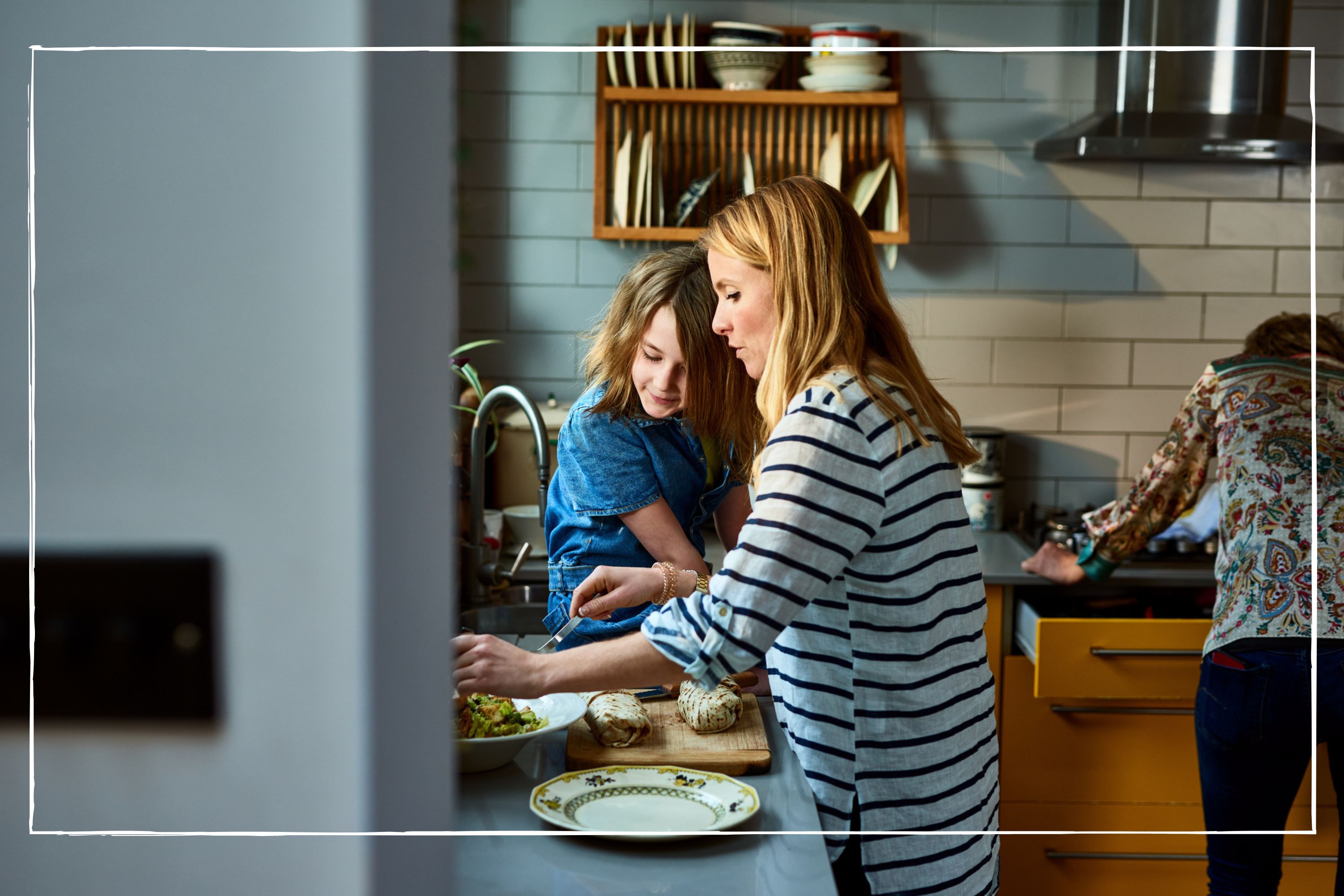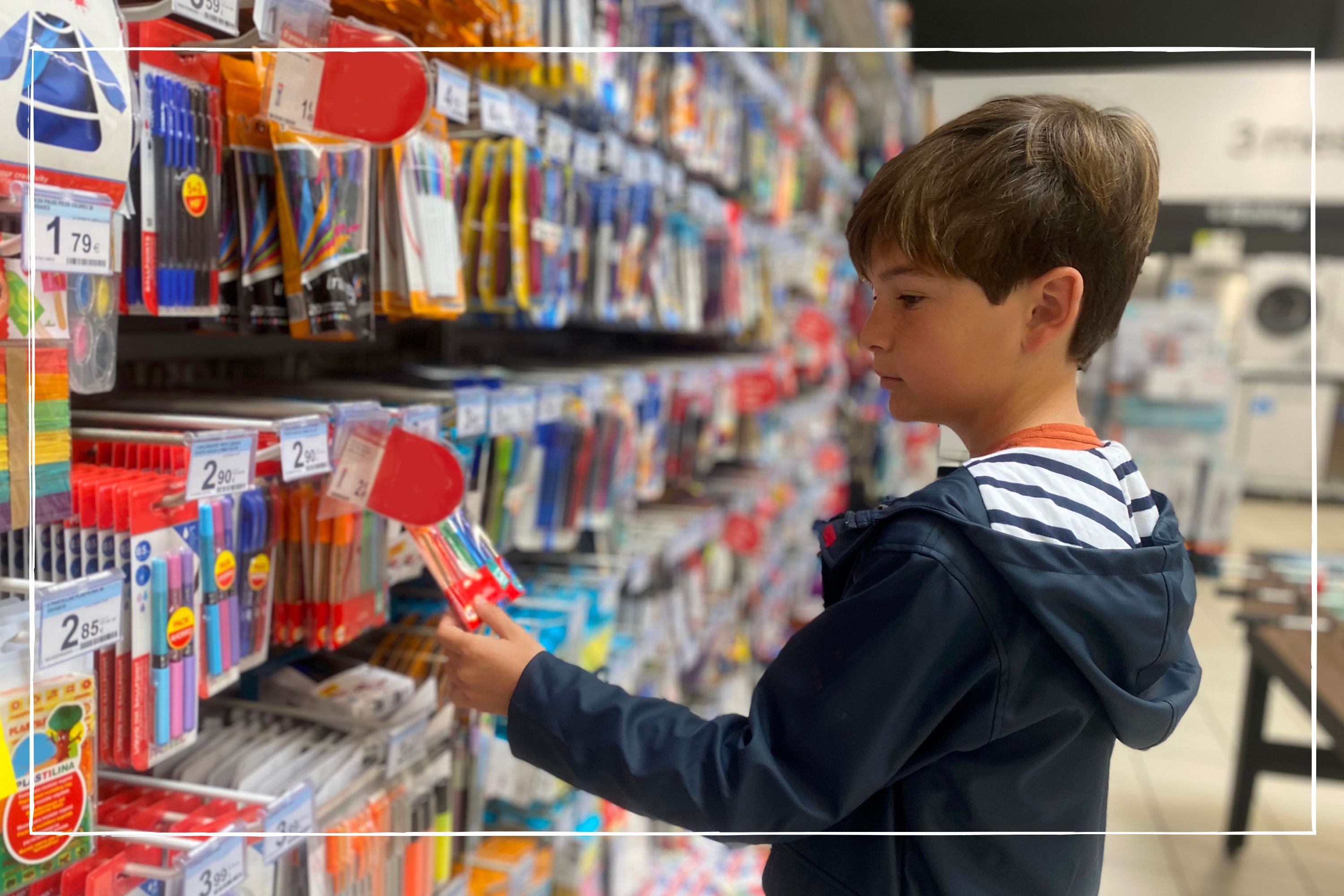I'm a money expert and this is my #1 hack to save money on food
Our money expert is an avid meal planner for her family, here's how she has honed the process to reduce waste and save money

Over the years I’ve lost count of the number of ways I’ve tried to cut the amount of money we spend on food, but with two (rapidly growing) tween and teen boys to feed, it’s not easy. And this year has felt particularly bad and I know I'm not alone in that.
Lots of families will have been concerned about how to save money on food throughout the cost of living crisis and might have already swapped to the cheapest supermarket (we explain if Aldi or Lidl is cheaper) and used their supermarket loyalty card more than ever before.
Even though the overall rate of inflation might seem like it's stabilising, food costs remain 18.3% higher than they were this time last year. Some individual items, like cheese, sugar, olive oil, and frozen veggies, are up by 30% or more. And unfortunately for me, they’re all things I buy.
Goodto.com's Money Editor Sarah Handley says: "There are so many reasons why food prices are still so high - but a lot of it stems from high energy and fuel prices and unprecedented weather conditions. While energy prices are finally falling, it takes time for these savings to work their way through the supply chain to the customer."
Rising costs have spurred me to hone my planning skills into something of a grocery shopping dark art.
Rachel Lacey, money expert
But the one thing that consistently works for me is to plan. But I don’t just mean thinking of one or two meals we might eat over the week and making sure their ingredients go in the trolley, I mean really planning.
It started a few years ago in a relatively enthusiastic, but far from perfect way – as much to get organised and try out new recipes as save money - but over time rising costs have spurred me to hone my planning skills into something of a grocery shopping dark art.
Here are my five steps to becoming a food-prepping pro and streamlining your shopping budget as you go.
GoodtoKnow Newsletter
Parenting advice, hot topics, best buys and family finance tips delivered straight to your inbox.
1. Figure out who you are feeding
For me, it all starts by figuring out who I am feeling and when, so I begin by looking at the calendar where we note everyone's comings and goings for the week(s) ahead.
To plan effectively for each day, I need to know the following:
- How many of us will be eating that night
- Whether we’ll all be eating together or grabbing a bite to eat when we can squeeze it in
I’ve learnt from experience that there’s no point slaving over a home cooked meal for all of us, if my husband will be going off on an evening bike ride or my 14-year-old has got football training. They’ll both be happier with something light and quick when they’re done.
And for days when we all need to eat, but can’t get round the table at the same time, a healthy one-pot meal on the hob, that everyone can help themselves to works a treat.
2. Decide on specific meals
The next step is to come up with a meal that works for each day. Before food costs started to spiral, this meant poring over food magazines or looking up recipes online for new ideas to try. But now it’s more about looking in the freezer and the cupboards to see what we’ve already got to work with.
One of our family faves is honey and ginger salmon which we have with broccoli and rice. It uses lots of store cupboard staples, so it’s often only the salmon and fresh veg we need to buy in for that meal.
Top tip
A meal plan is always a good opportunity to test-drive some new ideas, but if you are wary of overspending, don’t go for recipes that require lots of new ingredients you might never use again.
It can also help to think about what you’ll do with any remaining ingredients you might buy and how they can feature elsewhere in your plan. I make a spicy pork rice recipe that’s really quick to get on the table after a busy day, but it will only use half a pack of pork mince. Using the rest of the pack in meatballs or spaghetti bolognese is a cheap way of making the beef mince for that meal go further.
And when I’m making things like spag bol or meatballs I always make way more than I need, and bag up individual portions for the freezer. Great for evenings when you’re in a hurry or you aren’t all at home. It also helps if you can flatten down your freezer bags rather than freezing them in big lumps – they’ll not only fit in your freezer better but will defrost in a jiffy too. (This is especially handy if you are looking to freeze cheese.)

Checking your fridge and food cupboards while doing your online food shop can help you reduce wastage
3. Write your list
Once you know exactly what meals you’re going to be eating, you can write a list, and be specific. As well as writing down items you need, write down the quantities too. This can prevent overspending on items you won't use.
Just make sure you give the cupboards, fridge and freezer a quick check first, so you’re not buying anything you don’t need. It's also a good idea to note down when you plan to use each ingredient so you can make sure any use-by dates suit your plan.
4. Choose your most sensible way to do the shop
Sticking to your shopping list can help avoid any unnecessary spending, but how you shop will also impact how much you spend. Everyone has their own preference, but I know I spend way less if I do my food shop online. It’s far easier to stick to my list and I’m much less likely to throw extras into the trolley.
Money Editor Sarah Handley agrees: "I much prefer doing my food shop online than going into the supermarket. There's too much temptation for me in the store, and what I buy is massively influenced by how I'm feeling. If I've just eaten, I don't really fancy anything so don't buy enough, and if I'm too hungry, I'm always super-tempted to go for short-term treats.
"But shopping online, I can revise my list over a few days to make sure I'm buying what I actually need, and keeping my sweet tooth in check. Then I'll either choose to collect it to save on delivery fees, or if I need it delivered, I'll make sure I choose a saver slot. This is usually a four-hour slot on your chosen day rather than a 60 minute one."
If you do decide to opt for delivery, it's worth looking into getting a delivery saver pass from your chosen supermarket which can work out cheaper over the course of a year than paying for delivery each time you shop.
If you can, shop on your own too. Kids and partners never have quite the same respect for the sanctity of your carefully crafted shopping list as you do. If you do go to the supermarket, make sure you're wise to all the sneaky tricks supermarkets use to get you to spend more money.

Batch cooking can help you always have a back up plan ready to go should plans change last minute
5. Plan for some treats
Although your intention at the start of the week, might be to spend as little as you can and not buy anything that isn’t absolutely essential, I’ve learnt from experience that that reserve won’t always last the week through. After a long week, we need to have the food we want to eat.
For us, that means planning some extras for the weekend, whether it’s some garlic bread or ice cream to go with dinner or croissants and juice for breakfast.
It might mean spending a bit more, but it generally works out a lot cheaper buying those luxuries in the weekly shop than crumbling at the weekend with takeaways or last minute runs to the pricey convenience supermarket at the end of the road.
Why this works for our family
I think the reason proper meal planning works for us is that doesn’t actually change what we eat, we’re just only buying what we need and throwing less away as a result. We’re also not stockpiling food that we don’t need yet.
And because there’s a plan, it also means we’re less likely to nip to the shops midweek and spend a small fortune all over again.
We’re not perfect though! There are sometimes bad weeks that end with takeaway pizzas and days when plans change. The key though is just to roll over your plan and make sure the food you had bought isn’t wasted. Even better, it may even let you stretch out your weekly shop out by a day or two.
If you're interested in meal planning, these ways to reduce food waste will help you get started, as will these batch cooking ideas.
As well as being a mum, Rachel Lacey is a freelance journalist with more than 20 years' experience writing about all areas of personal finance and retirement planning. After 17 years at Moneywise magazine as both writer and editor, Rachel now writes for a variety of websites and newspapers as well as corporate clients. She is passionate about financial education and simplifying money matters for all.
-
 How to save money: 28 family-friendly money-saving tips for mums and dads
How to save money: 28 family-friendly money-saving tips for mums and dadsUnderstanding how to save money is key to limiting the impact of rising costs as much as possible
By Sarah Handley Published
-
 14 hidden benefits of your Amazon Prime membership
14 hidden benefits of your Amazon Prime membershipWe reveal the less-obvious perks of a Prime membership that will help you get the most value out of your subscription fee
By Rachel Wait Published
-
 14 surprising ways to spend your Tesco Clubcard vouchers - from restaurants and cinema passes to mini breaks and Disney+
14 surprising ways to spend your Tesco Clubcard vouchers - from restaurants and cinema passes to mini breaks and Disney+Tesco Clubcard vouchers can help you cut the cost of everything from groceries and travel to days out and cinema tickets
By Heidi Scrimgeour Published
-
 How to get Disney+ for free and save up to £79.90 a year
How to get Disney+ for free and save up to £79.90 a yearEven though the streaming giant ended its free trial offering, there are still multiple ways you can get Disney+ for free for up to 12 months
By Sarah Handley Published
-
 Parents of teens who have just taken their GCSEs urged to check child benefit status ahead of August deadline
Parents of teens who have just taken their GCSEs urged to check child benefit status ahead of August deadlineWith a child benefit deadline looming, some parents could see their payments reduced or stopped altogether - here's why
By Sarah Handley Published
-
 Parents should hold off buying this back to school staple 'as close to their first day as possible', says retailer
Parents should hold off buying this back to school staple 'as close to their first day as possible', says retailerWith parents turning their attention to kitting their kids out for the new school year, research suggestions which items should be left until the last minute
By Sarah Handley Published
-
 7 ways to save on back to school essentials, as its revealed parents will spend £2.3 billion in 2024
7 ways to save on back to school essentials, as its revealed parents will spend £2.3 billion in 2024We share ways you can get your child all the bits and bobs they need for the new school year, without breaking the bank
By Sarah Handley Published
-
 What day is child benefit paid around the bank holiday? Everything parents need to know
What day is child benefit paid around the bank holiday? Everything parents need to knowKnowing which day child benefit is paid when it comes to the bank holiday can help families plan their budgets accordingly
By Sarah Handley Published